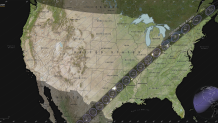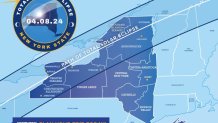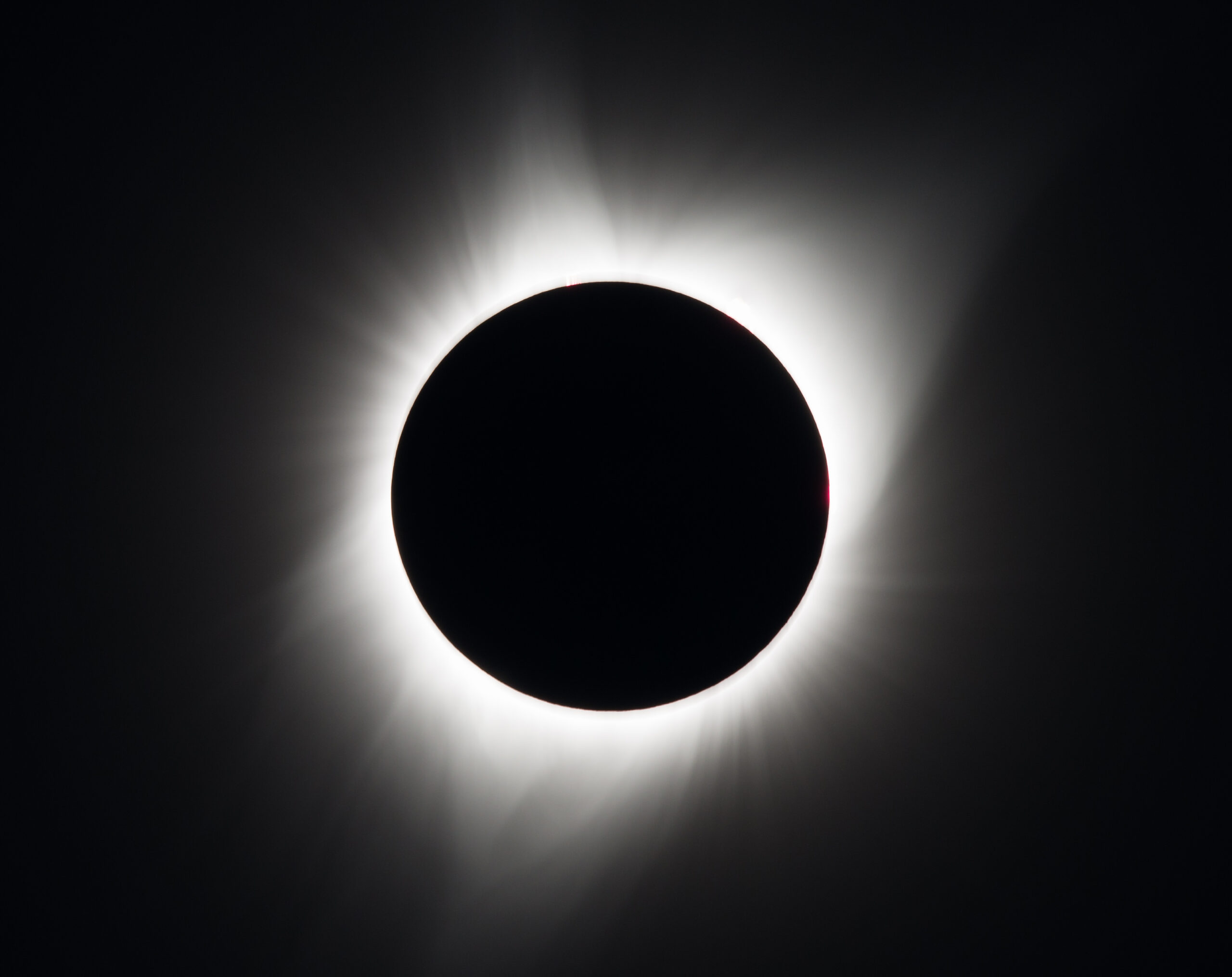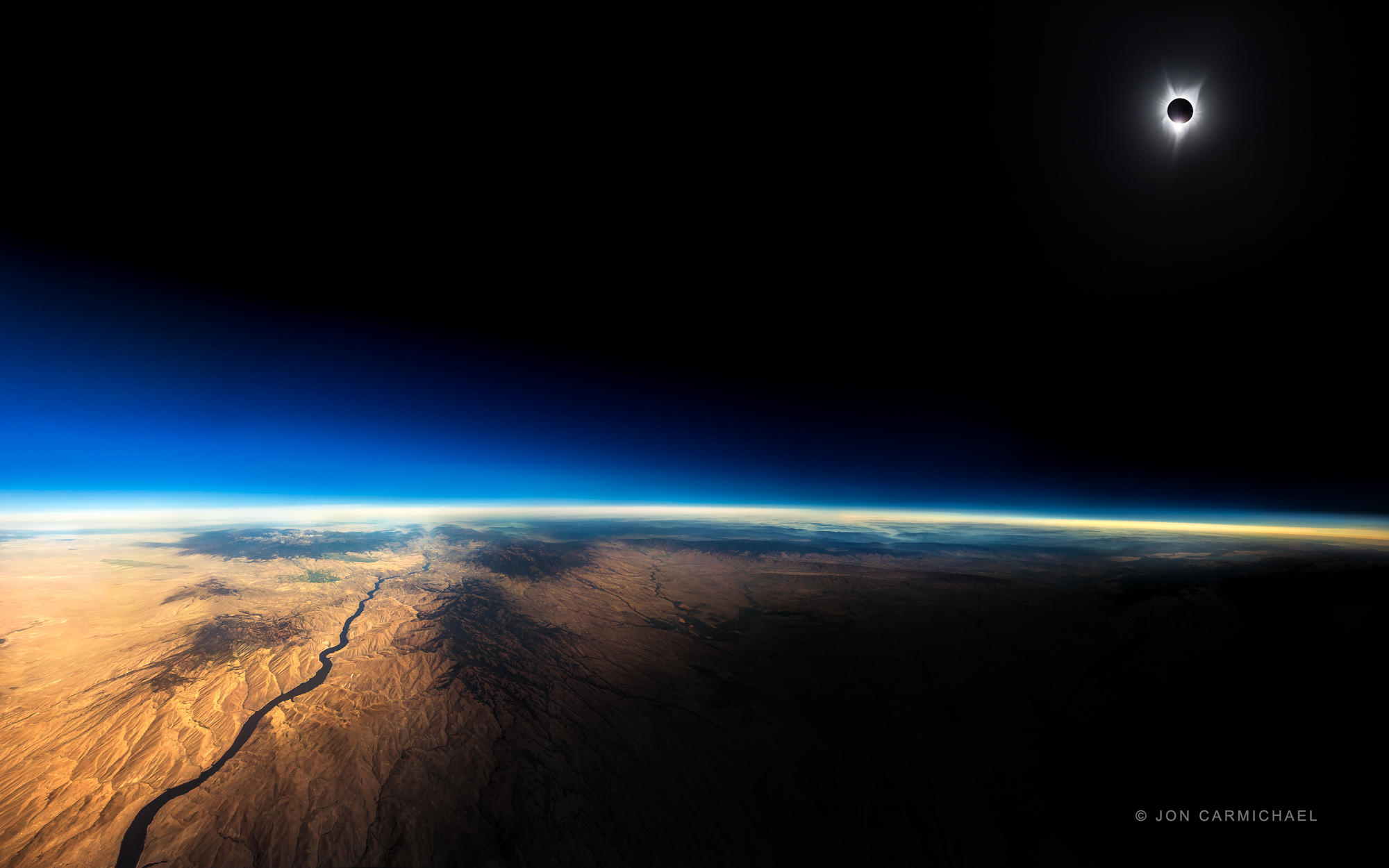What to Know
- There are less than 2 months until the most anticipated astronomical event of 2024. It is the first total eclipse in nearly a century, and New York has been preparing for this moment.
- Gov. Kathy Hochul shared the state's plan to ensure a unique, safe and inspiring experience for the hundreds of thousands of visitors who plan to see the event in New York.
- “Whether you live in New York or are visiting to witness this generational spectacle, ensuring everyone can take in this year’s eclipse safely is our top priority,” Hochul said. “I encourage everyone to keep safety in mind so that all can savor this experience and make memories to last a lifetime. Come for the eclipse, but stay for New York and enjoy all our great state has to offer.”
There are less than two months until the most anticipated astronomical event of 2024. It is the first total eclipse in nearly a century, and New York has been preparing for this moment.
Gov. Kathy Hochul shared the state's plans to ensure a unique, safe and inspiring experience for the hundreds of thousands of visitors who hope to see the event in New York.
“Whether you live in New York or are visiting to witness this generational spectacle, ensuring everyone can take in this year’s eclipse safely is our top priority,” Hochul said. “I encourage everyone to keep safety in mind so that all can savor this experience and make memories to last a lifetime. Come for the eclipse, but stay for New York and enjoy all our great state has to offer.”
Here we answer some questions you need to know.
Get Tri-state area news delivered to your inbox. Sign up for NBC New York's News Headlines newsletter.
When will the solar eclipse occur and where?
During the afternoon of April 8, 2024, a total eclipse will encompass the western and northern parts of New York State. In less than 15 minutes within a 3:15 p.m. to 3:30 p.m. window, the moon will pass between the earth and sun, turning day into night for 1 ½ minutes to 3 ½ minutes.
The roughly 100-mile wide path of totality will enter in the southwestern part of the state just after 3:15 p.m., and will depart northern New York just before 3:30 p.m. Cities and towns within this path include Jamestown, Buffalo, Rochester, Syracuse, Watertown, Old Forge, Lake Placid and Plattsburgh. The entire event will last for up to 2 ½ hours, marking the time the sun is first obstructed to the last moments when the moon’s shadow is cast.
For other areas of the state that are outside the path, there will still be quite a celestial spectacle. The minimum coverage in the state will be on Long Island, with the sun being shadowed at 88 percent there. New York City will see 89 percent coverage, with 96 percent in the Capital Region.

What is New York's plan?
For the last 15 months, an interagency task force, comprised of nearly two dozen state agencies and authorities, has been collaborating on plans to ensure a safe and memorable viewing experience for New York State’s residents and visitors. It is focused on building awareness of the state as a prime location to experience the eclipse by gathering important safety and preparedness information, amplifying and supporting region-specific viewing activities, and maintaining regular communication with local governments and municipalities, especially those within the path of totality. New York’s public safety efforts align with the state’s normal jurisdictional role over state parks and roads and support to local governments in their planning and decision-making in accordance with their own needs.
Public safety challenges for such an event include traffic management, communications capabilities and public health. State, county and local public safety and emergency management efforts have been and will continue to be tailored to the anticipated needs for an influx of those who come to view the eclipse from both inside and outside the state.
The state’s goals surrounding the eclipse are to provide a safe, fun and enjoyable experience from start to finish.

Where are the best spots to see the solar eclipse?
Alongside the focus on public safety is the promotion of New York State as an eclipse vacation destination. New York State and I LOVE NY are encouraging eclipse viewers to extend an eclipse viewing trip into a full vacation for a more enjoyable experience all around.
I LOVE NY has launched the multi-platform "Come for the Eclipse, Stay for New York" campaign to present New York as the place to be to witness this event. The campaign and a special eclipse website highlight viewing location information in the five regions that will experience the path of totality, a variety of attractions and special eclipse-related events happening across the state.
The website also includes resources for educators, families and kids, along with photos and frequently asked questions about solar eclipses.
Also, since last summer, reservations became available at 335 campsites at state parks across eight counties in New York for this event.
Sites will be available April 4-8 at the following State Parks:
- Allegany State Park, 2373 ASP, Rte 1, Salamanca, NY 14779 (Allegany County), for 165 sites, including campsites, cabins, cottages, and a group camp.
- Fair Haven Beach State Park, 14985 State Park Road, Fair Haven, NY 13064 (Cayuga County) for 29 cabins and one cottage.
- Letchworth State Park, 1 Letchworth State Park, Castile, NY 14427 (Livingston/Wyoming counties) for 19 cabins and cottages.
- Evangola State Park, 10191 Old Lake Shore Road, Irving, NY 14081 (Erie County) for 25 campsites.
- Four Mile Creek State Park, 1055 Lake Road, Youngstown, NY 14174 (Niagara County) for 50 campsites.
- Golden Hill State Park, 9691 Lower Lake Road, Barker, NY 14012 (Niagara County) for 25 campsites.
- Wellesley Island State Park, 44927 Cross Island Road, Fineview, NY 13640 (Jefferson County) for 21 cabins and cottages.



